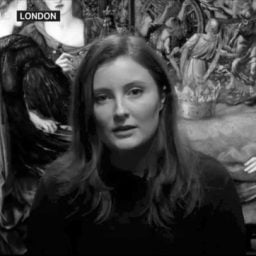Archaeology & History
Inside the Extravagant Castle Where Henry VIII Courted Anne Boleyn
Henry VIII courted his doomed second wife at her family castle in Kent.
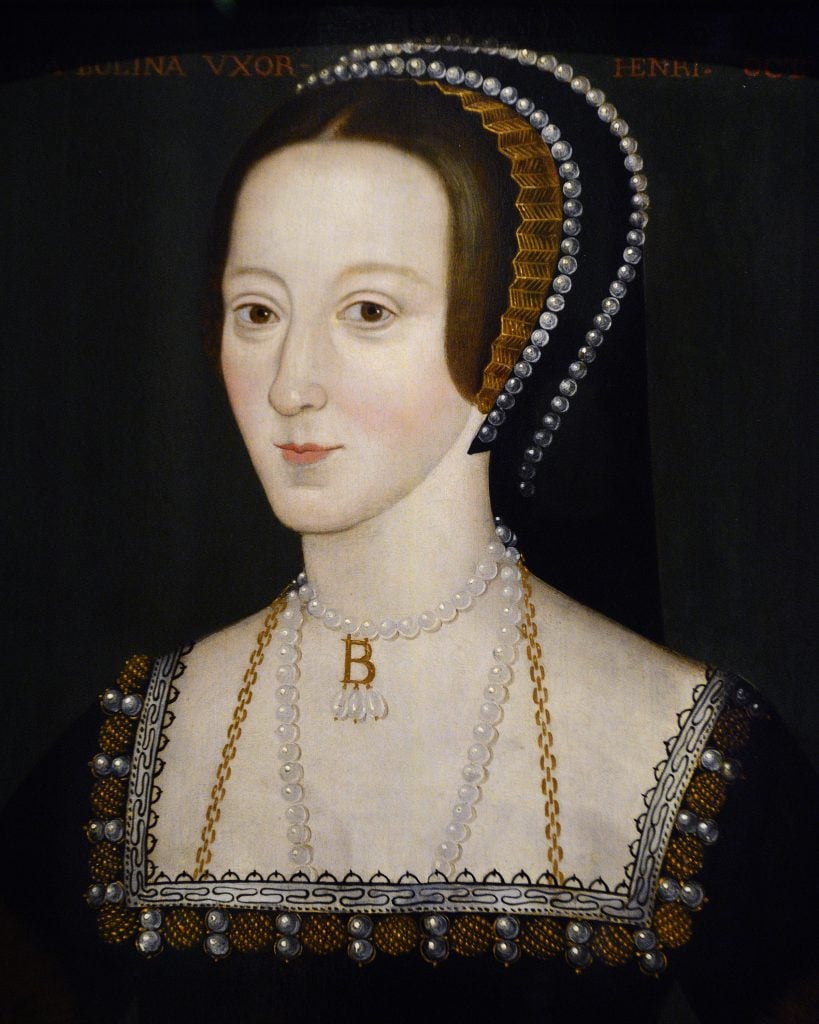
The childhood home of Anne Boleyn has been restored to its former Tudor glory so that visitors can immerse themselves in the origin story of the most notorious of Henry VIII’s six wives. The historic Hever Castle, which lies about 32 km west of London, was built in the 13th century and later became the principal seat of the influential Boleyn family.
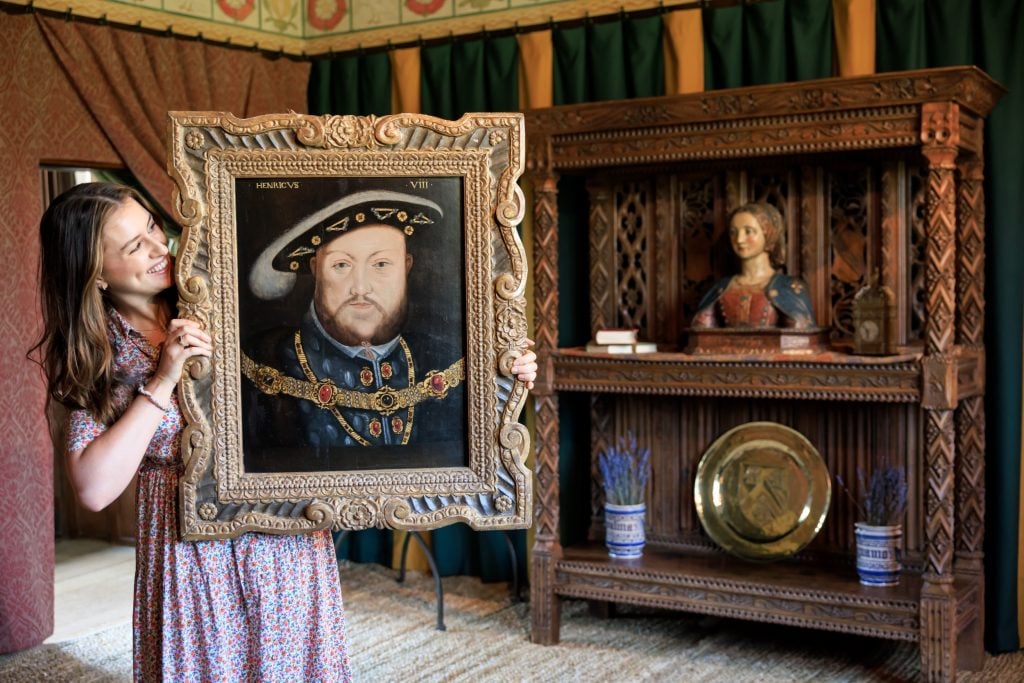
Kate McCaffrey, assistant curator and castle historian at Hever Castle pictured holding up a portrait of Henry VIII in the Great Chamber once inhabited by the Boleyn family. Photo courtesy of Hever Castle.
Until recently, the Boleyn Apartment where Anne’s family lived sported the smart Victorian oak panelling leftover from the days when it was owned by William Waldorf Astor, once the richest man in America, who bought the castle in 1903. A five-year research project has allowed historians and curators to painstakingly recreate the authentic atmosphere of a home belonging to a noble Tudor family.
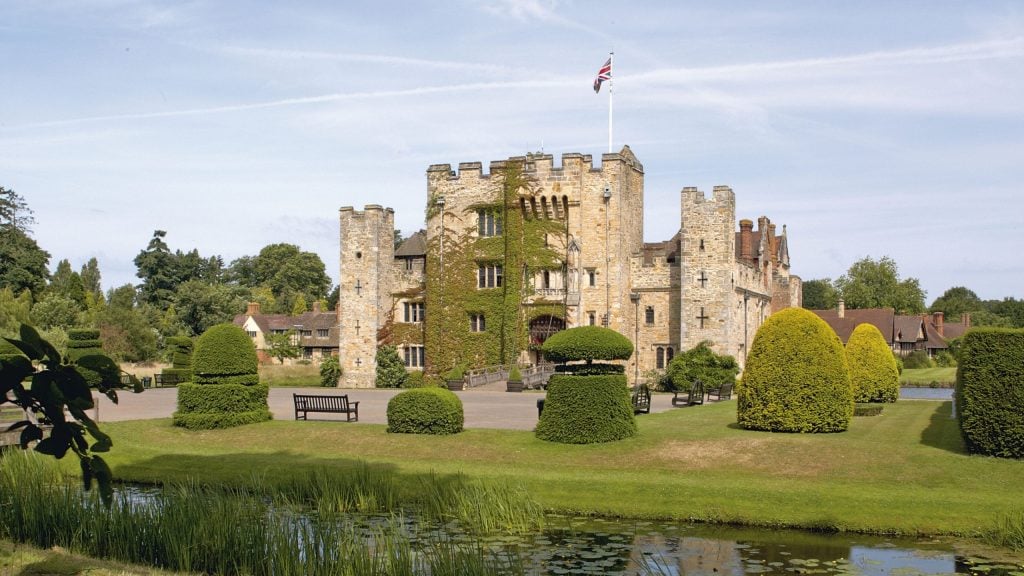
Exterior of Hever Castle. Photo: Jarrolds.
The stately, double-moated Hever Castle was acquired by Anne’s great-grandfather Geoffrey Boleyn in 1462 and inherited by her father Thomas in 1505, when Anne was likely about four years old (her exact birth date is unknown). She lived there for much of her childhood until 1513, when she was sent to the court of Margaret of Austria in what is now Belgium. Anne also regularly stayed at the house in her twenties, when she was being courted by Henry VIII.
During a recent research project, the architectural historian Dr Simon Thurley was able to establish that the Boleyn Apartment is structurally unchanged since the 16th century. Since all the family’s other properties have since been altered beyond recognition, Hever Castle provided a rare opportunity to re-immerse present-day visitors in history. In the absence of an inventory recording the exact contents of the house in Anne’s day, a team of specialists were able to establish a typical interior from the period.
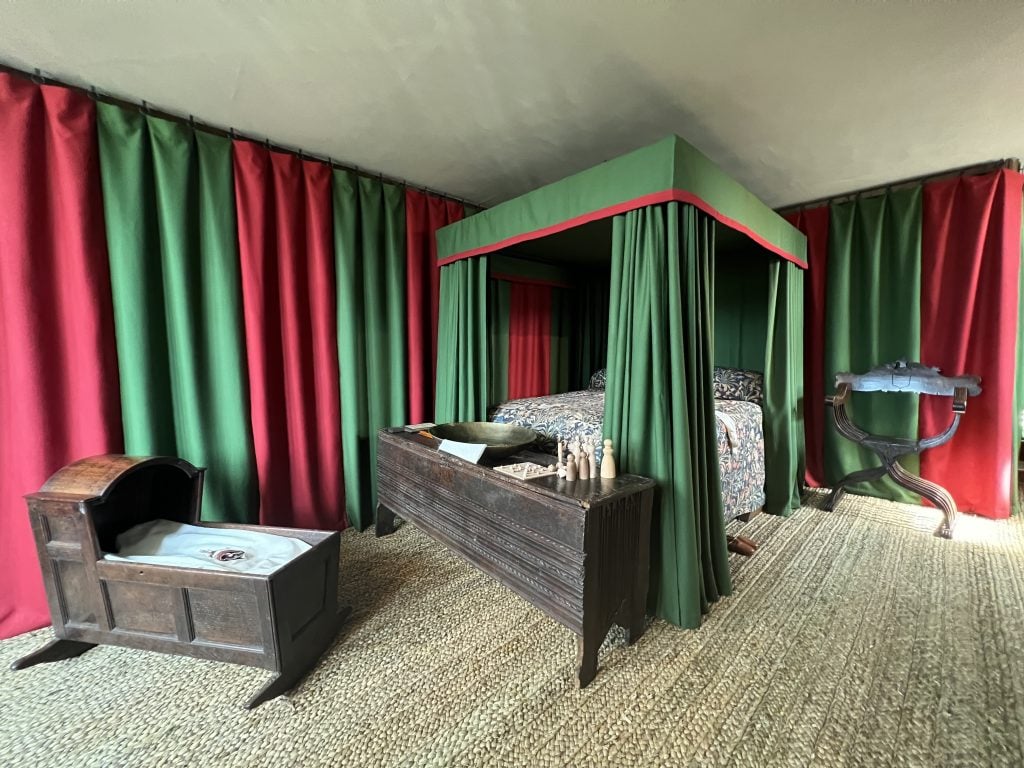
Tudor-style Nursery in the Boleyn Apartment at Hever Castle. Photo: Oliver Dixon.
Anne Boleyn would be remembered as a Queen of England from 1533-1536, and as one of Henry VIII’s ill-fated wives. Before these fateful events, however, Boleyn was a young girl who slept in the Nursery of her childhood home with her two surviving siblings, Mary and George. The Nursery is the second in the suite of rooms that make up the Boleyn Apartment.
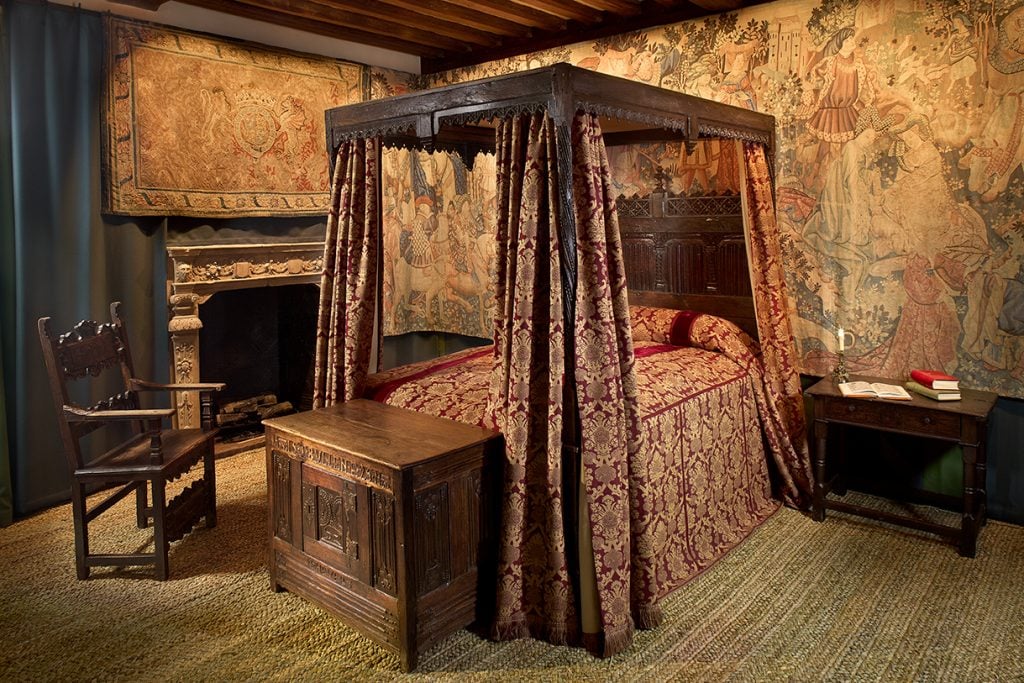
Tudor-style Best Bedchamber in the Boleyn Apartment at Hever Castle. Photo: Newbery Smith Photography.
When Anne Boleyn returned to England from France in 1522, she became a maid of honor to Henry VIII’s first wife Catherine of Aragon. In 1526, the king began attempting to seduce Anne but she refused to become his mistress and would often flee to Hever for privacy from the dramas of court life. On these occasions, she would have slept in the Best Bedchamber, the final of the suite of four rooms that make up the Boleyn Apartment. It has been redecorated in the Tudor style with extravagant tapestries.
“As her relationship with the king starts to heat up in the 1520s, Anne used Hever as an escape away from the prying eyes of court during those scandalous years,” said Kate McCaffrey, historian and assistant curator at Hever Castle. Of the 17 love letters we know Henry sent Anne, several were received while she was at Hever. “That was prolific for Henry because he hated writing letters,” added McCaffrey.
Anne likely read and responded to these letters in the Best Bedchamber and whatever she wrote was clearly convincing, because Henry eventually proposed to her. Anne made the decision to marry him at Hever, dramatically changing the course of English history. It would famously take many years for the king to arrange his divorce with Catherine. Anne and Henry secretly married in 1532 and later had a public, formal wedding in 1533.
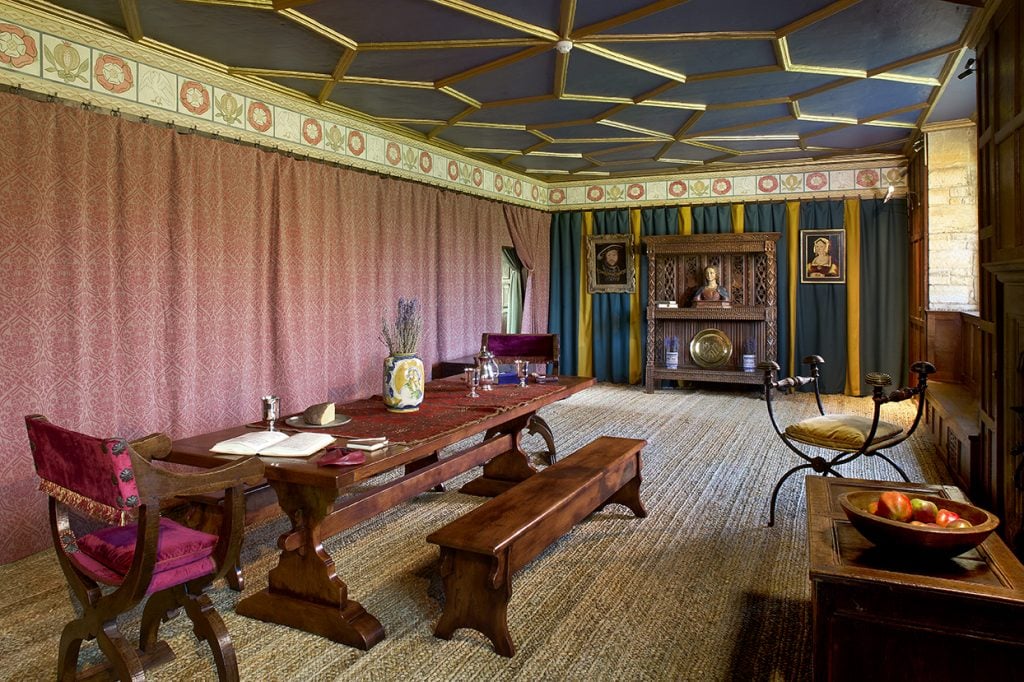
Tudor-style Great Chamber in the Boleyn Apartment at Hever Castle. Photo: Oliver Dixon.
The Great Chamber, the third in the suite of rooms that make up the Boleyn Apartment, was the very heart of the house. It was used for informal familial gatherings, entertaining private guests, writing, music performances and poetry readings, and sometimes for dining. Its similarities to a modern-day living room has been brought to life by the introduction of precious Tudor artifacts like lutes, books and writing materials. A portrait of Henry VIII hangs on the wall.
The researchers who worked on the refurnishing of the rooms were surprised to note that, in Tudor times, even nobility lived with much less furniture than we are accustomed to today. Even more unusually, carpets would often be placed on tables. Paintings by Holbein were studied to learn the style in which the curtains that wrapped around the walls of a room were usually hung.
“Something that surprised me was just how much color and vibrancy wealthy Tudors lived amongst,” said McCaffrey, referring to the newly installed wall hangings and tapestries throughout the suite. Antique furniture from the early 16th century was especially acquired, including a new oak cupboard bearing carvings of falcons from 1530 for the Great Chamber.
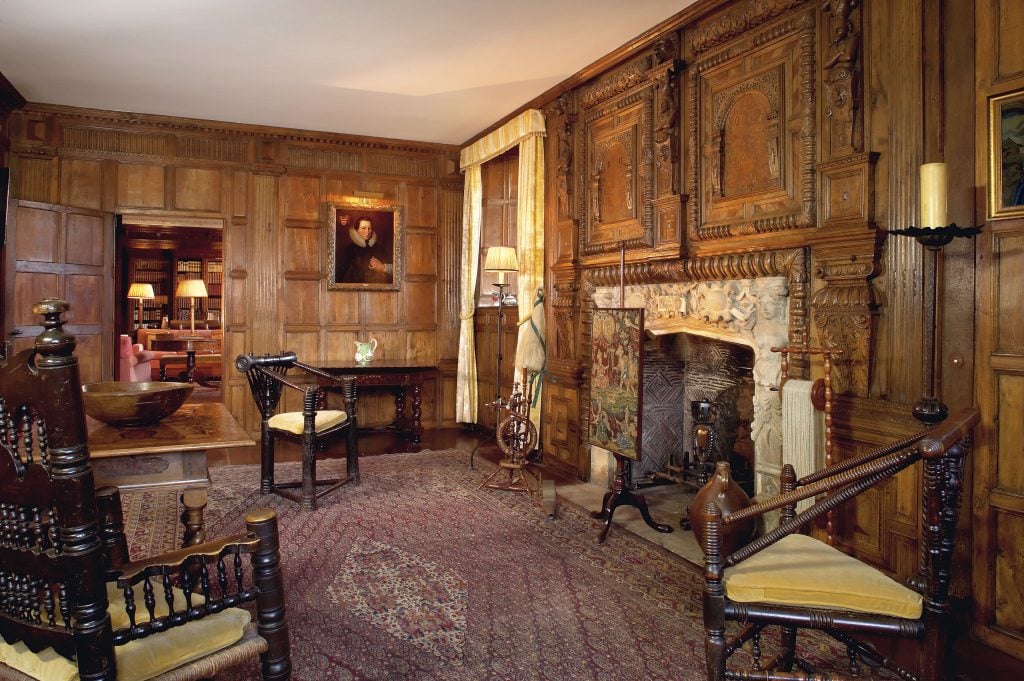
The Parlour before it was redecorated in a Tudor style, in the Boleyn Apartment at Hever Castle. Photo: Oliver Dixon.
The Parlour is the first in the suite of rooms that make up the Boleyn Apartment. A photograph from before the Tudor restoration shows how it looked for over a century, having last been redecorated in a late Victorian style and renamed the Morning Room. After Astor bought the property in 1903, he spent part of his vast fortune restoring the castle according to the tastes of his time. A bath he installed in the Nursery was removed as part of the latest restoration.
“It was quite a modern suite of rooms, so it’s a real transformation to have them turned back to how they would have looked 500 years ago,” said McCaffrey.
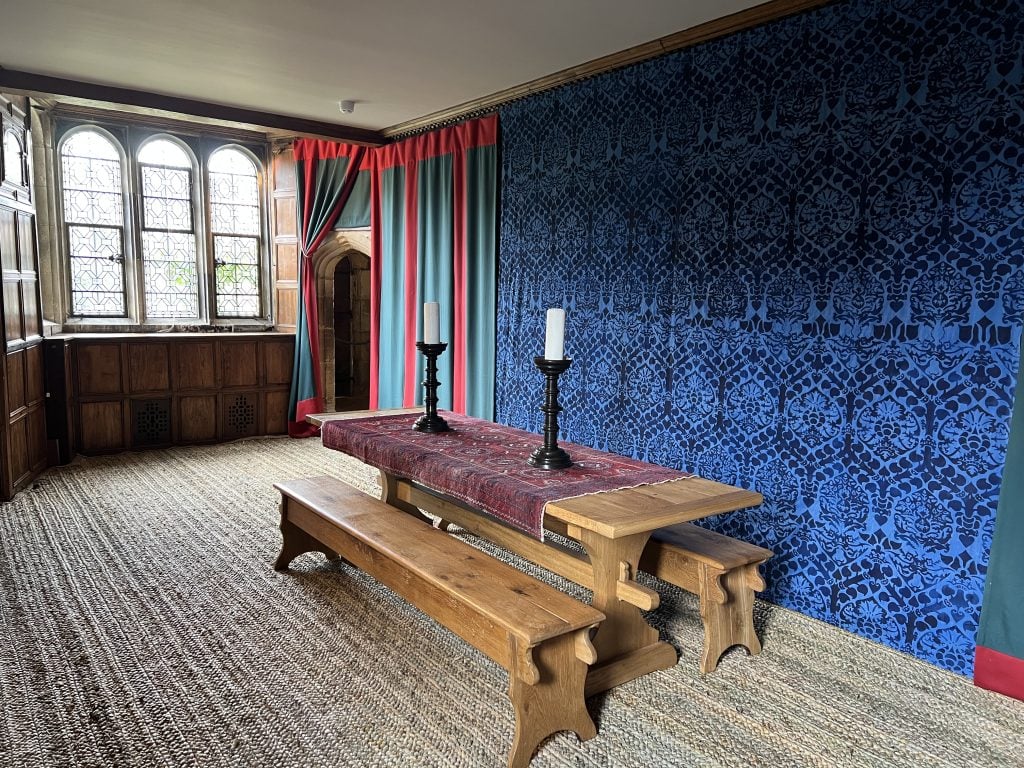
Tudor-style Parlour in the Boleyn Apartment at Hever Castle. Photo: Oliver Dixon.
During Anne’s lifetime, the space would have been used for intimate gatherings. It had previously been part of the Great Hall but was closed off by Geoffrey Boleyn, evidencing a trend in Tudor tastes away from the open plan, communal format that was typical of the Middle Ages, towards something much more private.
“We’ve gone for a semi-immersive experience through the rooms,” said McCaffrey. “As soon as you step into the suite, we have rush matting on all the floors, which immediately gives you this amazing herbal smell that is very similar to how it would have been 500 years ago.”

